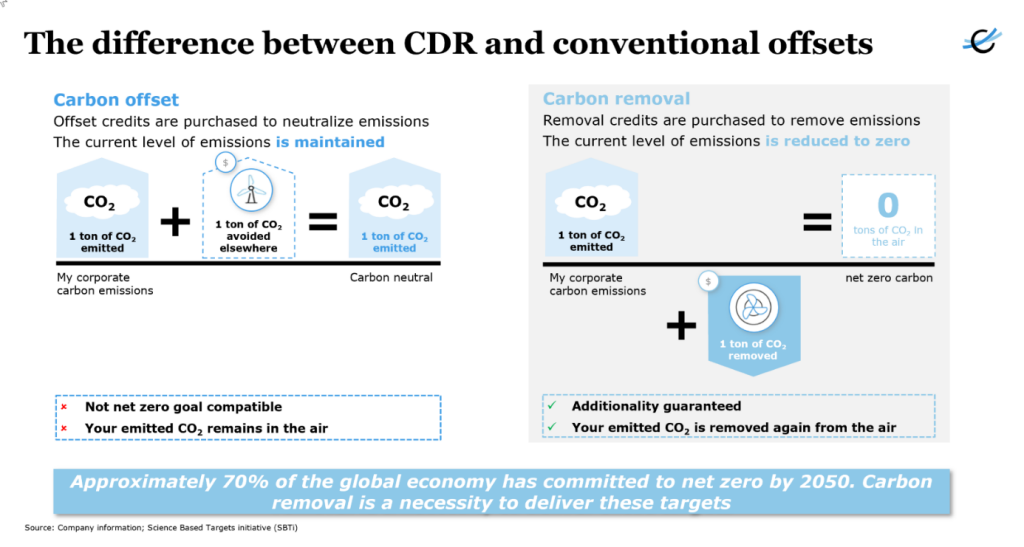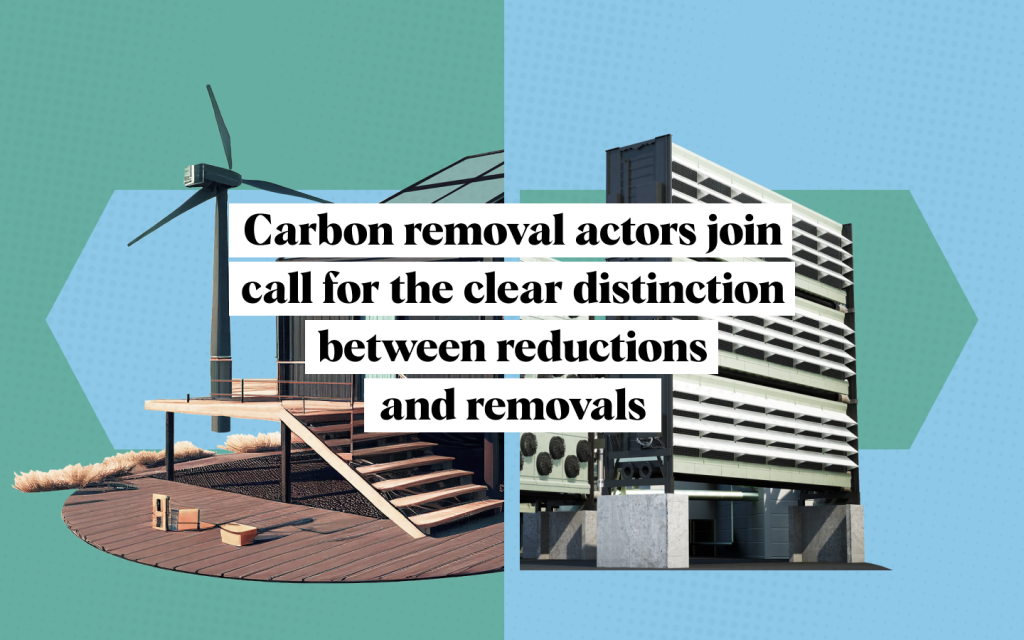
At this year’s World Economic Forum (WEF) Annual Meeting, I had the privilege to reflect on the development of carbon markets, as well as ways that companies can proactively meet their long-term sustainability targets, during an excellent discussion with the CEO of Puro.earth Antti Vihavainen, held at Climeworks’ venue on the Davos Promenade.
Recent developments in the VCM
The session was inspired by recent developments in the carbon markets space. Notably, the voluntary carbon market (VCM) has brought value to corporate actors by allowing them to extend their climate action beyond what is required by law. In general, companies participating in the VCM have performed better than their peers in terms of climate action, and more frequently report year-to-year emissions reductions and increased renewable energy consumption. The VCM also provides an important route to scale for new climate technologies.
However, due to issues with integrity and claims in the traditional offset (avoided and reduced emissions credits) parts of the market, it has been questioned if the VCM is in the best position to provide a platform for companies to achieve the 1.5°C goals as stated per the Paris Agreement. Following the IPCC Special Report on 1.5°C and strong demand increases from 2019 to 2021, a slowdown of the traditional offset part of the VCM began in 2022, which lasted well throughout 2023. At the same time, purchases of carbon dioxide removal, associated with higher quality than traditional offsets, experienced nearly 650% growth throughout 2023.
Despite uncertainty in the VCM, companies can take different steps to build trust via positive climate action. From a policy angle, they can familiarize themselves with current and upcoming regulations which may play a role in their sustainability journey. There are various regulatory and legislative efforts at different stages of development and approval, which can shape stringent corporate action. In the EU, for instance, this ranges from the EU Green Claims Directive setting guidelines for environmental claims, to the EU carbon removal certification framework (EU CRC-F), establishing clarity on the definition of carbon removals. Companies must also understand the extent of their emissions, as well as how reductions measures can be implemented across the board. This can be done by partnering with organizations such as SBTi to set clear, science-based targets and define reductions as well as carbon removal measures.
Learnings from the VCM for carbon removal
When looking at defined reduction measures, companies do need to be aware of the risks besetting the VCM. For instance, some offset projects in the avoided emissions space (e.g. avoided deforestation) within the VCM have faced criticism. However, initial steps are being taken to set a regulatory framework that could positively impact overall market design – for instance, the Core Carbon Principles (CCPs) were released by the IC-VCM in 2023. These represent a first step to offering a much-needed minimum level of quality standards. And in this context, we should also give credit to the VCM – due to the challenges faced and recent criticisms, the CDR market can learn directly, and aim for high-quality standards from the beginning to avoid similar issues.
Given said learnings, the carbon removal industry has expressed a willingness for stringent regulation and frameworks for measurement, quantification, and classification. This has been expressed by working groups, industry alliances, and companies such as Climeworks, wanting to offer clear definitions on what constitutes “high-quality” removals. In turn, this provides increased trust for businesses and stakeholders, who can take direct action by building a high-quality carbon removal portfolio to directly complement their emissions reduction efforts.
As the market for carbon removals expands, CDR needs to remain within a separate framework from “conventional” offsets, as it is comprised of differing characteristics and should be recognized separately. Conventional offset credits intend to balance out current atmospheric levels and prevent further emissions increases, while carbon removals directly reduce the atmospheric balance of GHG emissions. The conventional offset market would theoretically also cease to exist at the net-zero point.
Getting it right: Future compliance schemes
Until now, we’ve seen different uptakes of carbon removal and its integration into markets. At COP28, for instance, governments rejected moving forward with CDR recommendations under Article 6.4. While showing difficulty in terms of uptake speed, it also highlighted an opportunity to “get it right” – to clearly define and classify carbon removals. This is particularly important as the VCM can provide a blueprint for how future compliance schemes may work. By ensuring that removals included in VCM schemes are truly high-quality, there is the potential for a similar model to be applied in a compliance scheme fully integrating removals. If future policies continue to offer a tangible framework for what constitutes a “ton of permanent removal,” this will be beneficial to both the CCM and VCM in the long run.
The developments within carbon markets in recent years may have led to some uncertainty – but also offer important learnings and opportunities for forward-thinking organizations. Ideally, companies can focus on having clear and tangible action plans focused on science-based, transparent reduction target-setting, with the goal of employing high-quality removals to remove remaining emissions at the same time. In order for carbon removal to scale to the large-scale quantities needed in the future, it is important that companies proactively prioritize both emissions reductions and removals already today.


